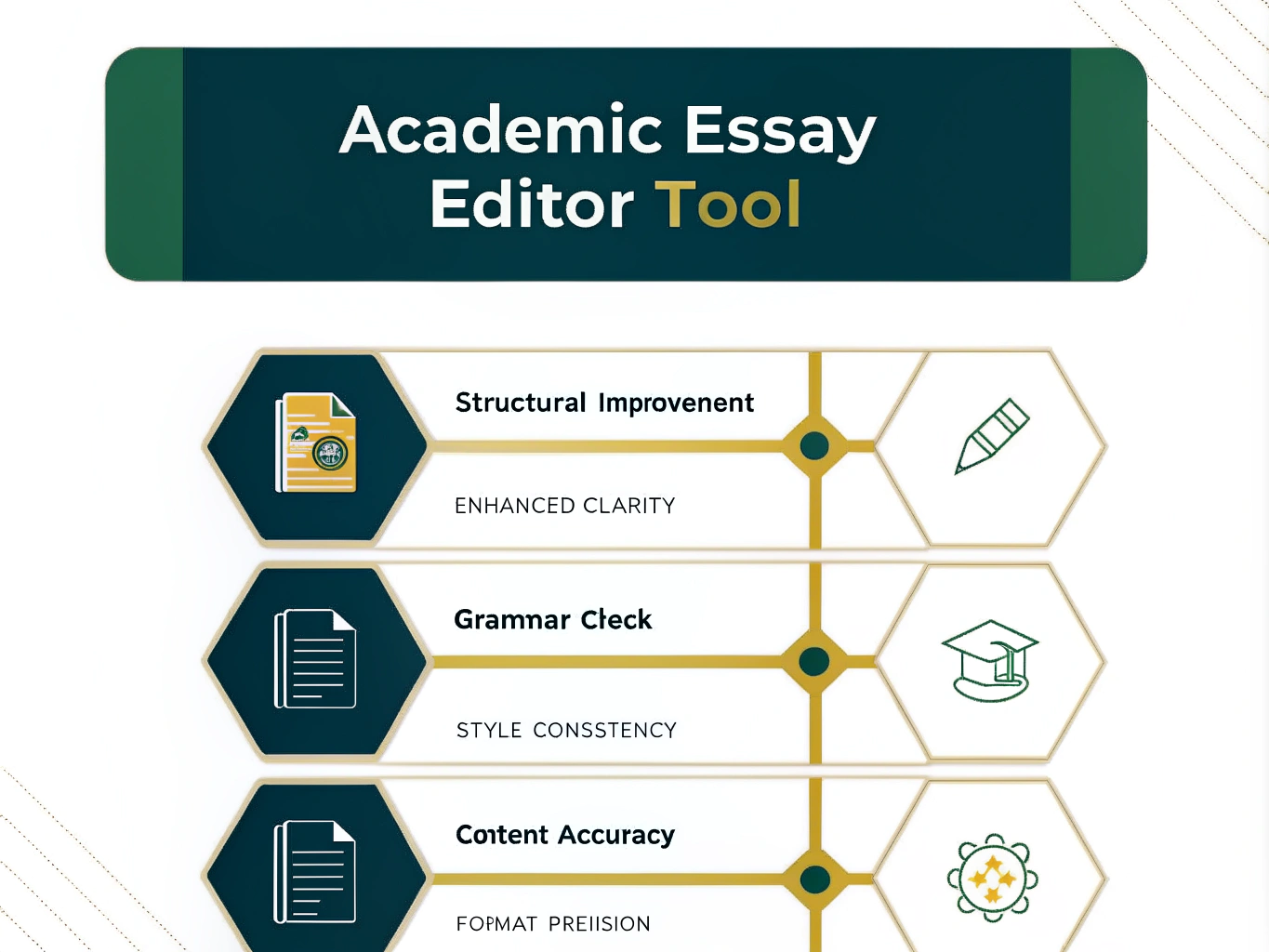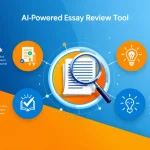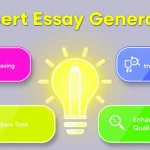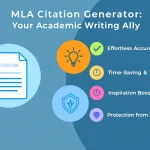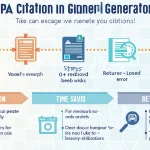Essay and Literature Review Editor
Is this tool helpful?
How to Use the Academic Essay Editor Tool Effectively
Follow these steps to get accurate and valuable feedback from the Academic Essay Editor Tool:
- Select Document Type: Choose the kind of academic document you’re submitting. Examples you might enter here include “Critical Analysis Essay” or “Systematic Literature Review.”
- Paste Your Text: Insert the complete text of your document into the text box. Make sure to include all relevant parts, such as the abstract, body sections, and conclusion.
- Specify Style Guide: Pick the style you want the editor to follow for citations and formatting. For example, “Harvard Referencing” or “Turabian Style” are valid choices.
- Highlight Specific Concerns (Optional): Mention any particular areas you want the tool to concentrate on, like “Improve thesis statement clarity” or “Check citation formatting in methodology.”
- Submit for Review: Click the “Edit Document” button. The tool will analyze your submission and offer detailed editing feedback.
- Review Suggestions: Carefully examine the editing recommendations to enhance your writing.
- Copy Edited Text: Use the copy functionality to transfer the revised text easily into your word processor or academic writing software.
Understanding the Academic Essay Editor Tool: Definition, Purpose, and Benefits
What Is the Academic Essay Editor Tool?
The Academic Essay Editor Tool is an online application designed to help you improve your essays, research papers, and literature reviews. It offers more than grammar checking; it provides detailed analysis of structure, style, content relevance, and proper formatting according to your chosen academic style guide. This smart editing assistant helps you polish your work and meet academic standards effectively.
Purpose and Key Benefits
The tool aims to improve the clarity, coherence, and professionalism of your academic writing by addressing common challenges such as logical flow, citation consistency, and style adherence. Here are the major benefits:
- Improved Writing Quality: The tool refines the structure and expression of your work for stronger academic impact.
- Time Saving: Automated editing reduces the need for multiple manual revisions.
- Skill Development: Reviewing the tool’s feedback helps you learn how to write more effectively.
- Consistent Style: It ensures your document follows the specified citation and formatting guide throughout.
- Reduced Errors: The AI detects subtle mistakes that are easy to overlook during self-editing.
Practical Applications of the Academic Essay Editor Tool
Enhance Academic Papers and Research Documents
This tool is ideal for a range of academic writing needs. Here are some practical ways you can use it:
- Undergraduate Essays: Ensure clarity and logical flow in assignments like a 5000-word environmental science report, with consistent terminology and properly formatted citations.
- Graduate Theses: Polish complex arguments and maintain a uniform tone across lengthy documents, such as a master’s thesis on sociolinguistics.
- Research Papers: Verify that methodologies and results sections are clear, concise, and well-structured for journal submissions.
- Literature Reviews: Check the balance and coherence when covering multiple studies, for example, in a systematic review on renewable energy technologies.
- Dissertation Chapters: Maintain precise academic language and formatting in thesis chapters, ensuring each contributes to your central argument.
Example: Refining a Research Abstract
Original abstract excerpt:
“This paper looks into the relationship of diet and heart disease. Many studies show that heart health is affected by what people eat. We look at these studies and talk about them.”
Edited abstract by the tool:
“This study investigates the correlation between dietary patterns and cardiovascular disease risk. By critically reviewing existing literature, the analysis highlights key nutritional factors influencing heart health.”
The revision improves academic tone, clarity, and specificity, demonstrating how the tool refines your writing.
Key Features and Editing Capabilities
1. Structural Analysis and Improvement
- Identifies weak or unclear paragraph organization
- Ensures logical progressions between arguments and ideas
- Confirms presence of clear introduction, body, and conclusion
2. Clarity and Conciseness Enhancements
- Suggests rephrasing for ambiguous or wordy sentences
- Removes redundancy to sharpen focus
- Encourages straightforward language without losing depth
3. Advanced Grammar and Syntax Corrections
- Detects subtle grammatical mistakes common in academic texts
- Promotes sentence variety and proper punctuation usage
- Polishes writing to meet scholarly standards
4. Consistency in Style and Tone
- Maintains formal and objective academic tone throughout
- Ensures adherence to selected academic style guidelines (APA, MLA, Chicago, etc.)
- Aligns language and formatting to disciplinary conventions
5. Content Relevance and Citation Accuracy
- Checks for evidence-backed arguments and consistent citation use
- Evaluates each section’s contribution to the overall thesis or research question
- Flags overreliance on limited sources or unsupported claims
6. Precise Formatting Support
- Ensures document complies with your chosen style guide’s formatting rules
- Reviews heading hierarchy, font styles, and spacing
- Verifies completeness and correctness of bibliography and references
Addressing Common Academic Writing Challenges
Overcoming Writer’s Block
If you struggle with structuring your ideas, the tool provides feedback on paragraph organization and flow. This guidance helps you reposition or expand sections for greater clarity and impact.
Eliminating Redundancy and Repetition
The editor identifies repeated phrases or concepts and suggests consolidating them to strengthen your argument and maintain reader interest.
Strengthening Your Arguments
By evaluating the relevance and support behind your claims, the tool highlights areas needing additional evidence or clearer connection to your central thesis.
Navigating Complex Citation Styles
Many academic fields require strict adherence to citation formats. The tool ensures your in-text citations and reference lists are consistent with the chosen style, helping you meet institutional requirements.
Important Disclaimer
The calculations, results, and content provided by our tools are not guaranteed to be accurate, complete, or reliable. Users are responsible for verifying and interpreting the results. Our content and tools may contain errors, biases, or inconsistencies. Do not enter personal data, sensitive information, or personally identifiable information in our web forms or tools. Such data entry violates our terms of service and may result in unauthorized disclosure to third parties. We reserve the right to save inputs and outputs from our tools for the purposes of error debugging, bias identification, and performance improvement. External companies providing AI models used in our tools may also save and process data in accordance with their own policies. By using our tools, you consent to this data collection and processing. We reserve the right to limit the usage of our tools based on current usability factors.
